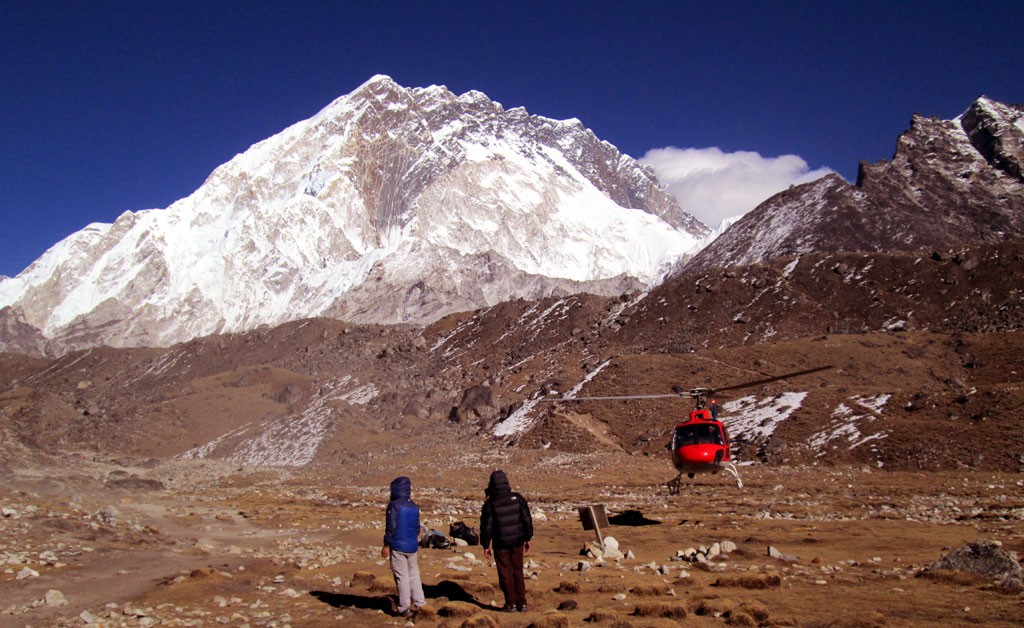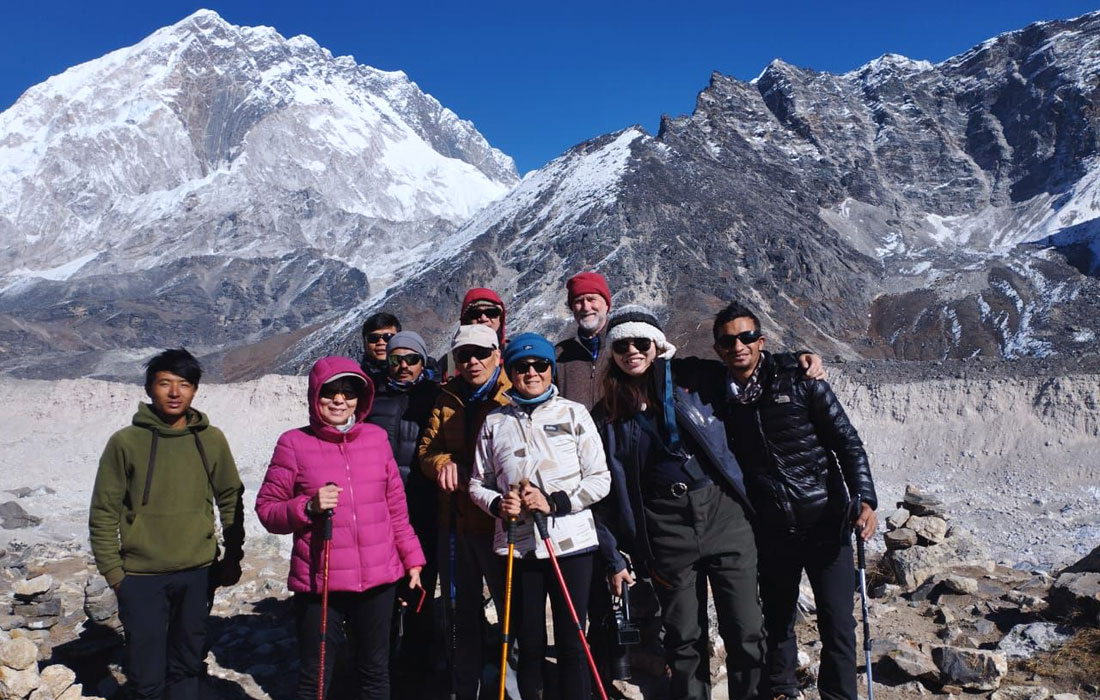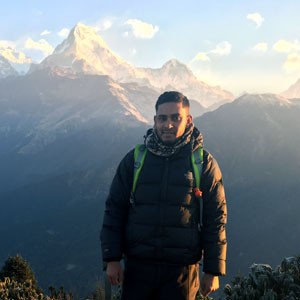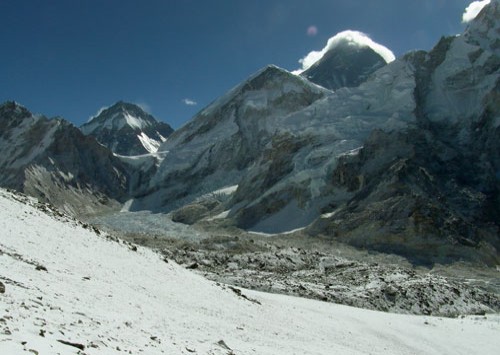Everest Base Camp Trek with Helicopter Return Overview
The Everest Base Camp Trek with Helicopter Return is the ideal way to experience the world’s most iconic trek while avoiding the long, demanding descent back to Lukla. It combines the complete trekking journey, the landscapes, the people, the culture, the pride of reaching Base Camp with the luxury and comfort of a scenic helicopter flight that returns you to Kathmandu in minutes. For many travelers, this is the smartest, most rewarding way to trek to Everest.
Your adventure begins with the classic Lukla flight and the gradual ascent through Sherpa villages shaped by Buddhist culture and mountaineering history. Each day brings a new atmosphere: the lively streets of Namche Bazaar, the peaceful forest trails to Tengboche Monastery, the open alpine fields around Dingboche, and the powerful high-altitude terrain leading toward Lobuche and Gorak Shep. As the air grows thinner, the views of Ama Dablam, Lhotse, and Everest become sharper and more dramatic.
Reaching Everest Base Camp on foot is always a deeply personal moment, the sound of the Khumbu Icefall, the bright expedition tents, the cold wind rolling down from the glacier. It feels like standing in the heart of mountaineering history. The following morning’s hike to Kala Patthar is often described as the emotional peak of the entire journey. Watching Everest glow in the first light of sunrise, so close it feels within reach, is a moment that stays with you for life.
Instead of spending 3–4 days trekking back down, the helicopter return adds a spectacular and comfortable finish. Within minutes, you lift off above Gorak Shep and rise over glaciers, ridgelines, and valleys you walked through earlier. The aerial view of Everest, Ama Dablam, Pumori, and the Khumbu Valley reveals a completely different perspective wider, grander, almost dreamlike. What normally takes days on foot becomes an effortless, scenic flight back to Kathmandu, saving energy, time, and stress on the knees.
Safety and professional support shape every part of this journey. You walk with experienced, government-licensed guides who understand altitude, weather, trail conditions, and the safe pacing required for a successful trek. Our team monitors your health daily, selects reliable teahouses, manages meals, arranges permits, and coordinates the helicopter based on live weather updates. The return flight is operated by trained high-altitude pilots who know the mountain environment and follow strict aviation standards.
This trek is perfect for:
– travelers who want the full Base Camp experience without repeating the descent
– trekkers with limited time who still want to reach EBC on foot
– seniors or beginners concerned about long downhill sections
– busy professionals who want a complete Himalayan adventure in less time
– photographers who want both ground-level and aerial perspectives
– couples, solo trekkers, and small groups seeking a meaningful, safe, and efficient itinerary
At Dream Heaven Adventure, we believe in honesty, safety, and genuine care. We never rush acclimatization, never compromise on service quality, and always provide clear information about altitude, weather, and helicopter operations. With years of experience organizing Everest region treks, we ensure every detail of permits, lodging, health checks, communication, and logistics is handled smoothly so you can focus entirely on the mountains.
The Everest Base Camp Trek with Helicopter Return is more than a shorter version of the classic trek. It is a thoughtfully designed adventure for those who want the emotion of reaching Base Camp, the satisfaction of completing the legendary trail, and the comfort of flying back in style. It honors the spirit of trekking while making the journey safer, easier, and more enjoyable, the perfect balance of effort and reward.
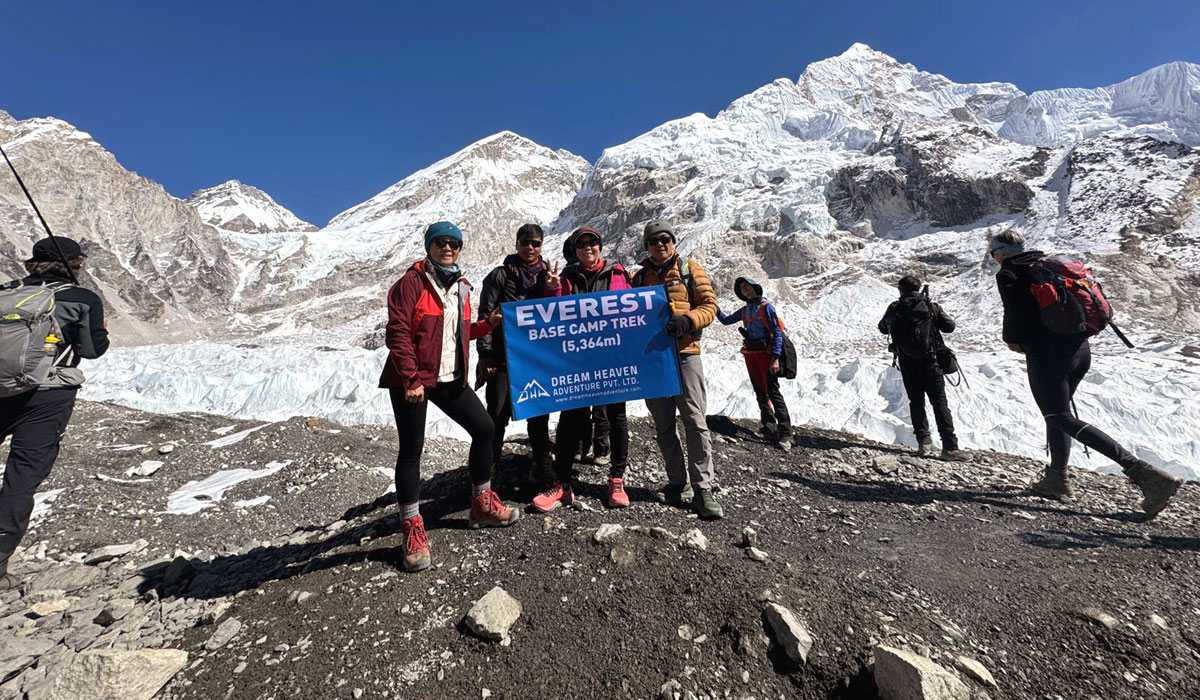
Why Choose the Everest Base Camp Trek with Helicopter Return?
The Everest Base Camp Trek with Helicopter Return is one of the most rewarding and efficient ways to experience the Khumbu region. It gives you the full excitement of trekking to Base Camp on foot while adding the comfort, safety, and luxury of flying back to Kathmandu within minutes. For many travelers, this itinerary offers the most balanced way to enjoy Everest, effort and achievement on the trail followed by a breathtaking scenic flight through the Himalayas.
The walk from Gorak Shep back to Lukla is long and physically demanding. Instead of retracing days of steep, rocky downhill sections, you enjoy the complete trekking experience up to Base Camp and then return by helicopter. You still experience every major highlight of Sherpa culture, high-altitude landscapes, iconic villages, and the powerful atmosphere of Base Camp but skip the hardest and least rewarding part of the journey.
The helicopter flight itself is an unforgettable finale. As you rise above the Khumbu Glacier and glide past Everest, Ama Dablam, Lhotse, Pumori, and countless ridgelines, the Himalayas appear in a wide, dramatic panorama that even trekkers rarely see. Many travelers describe the aerial perspective as the most emotional moment of the entire adventure.
By avoiding the long descent, you reduce physical strain, protect your knees, and minimize fatigue, a major advantage for first-time trekkers, seniors, and anyone who wants a more comfortable experience. The helicopter return also makes the itinerary ideal for travelers with limited time, allowing you to complete the full trek without rushing your acclimatization or skipping important stops along the way.
In a region where weather can delay Lukla flights for days, the helicopter pickup from Gorak Shep adds a significant layer of reliability. You fly directly back to Kathmandu, avoiding uncertainty and ensuring a smooth, predictable ending to your trek.
This itinerary is also popular among photographers, couples, and special-occasion travelers. The sweeping views from the helicopter offer rare photographic angles, and the experience itself becomes a memorable way to celebrate milestones such as honeymoons, anniversaries, or birthdays.
Throughout the journey, you trek with licensed, experienced guides who understand altitude, terrain, culture, and safe pacing. The helicopter return is operated by skilled high-altitude pilots who follow strict safety protocols and understand Himalayan conditions in depth. This combination of professional guiding and expert aviation support makes the trek both safe and exceptionally enjoyable.
You still earn every moment at Everest Base Camp through your own effort the climb, the views, the culture, the emotion. But instead of ending the adventure with days of descent, you return in comfort, efficiency, and style. It is the perfect blend of achievement, reward, and convenience a modern way to experience one of the world’s greatest trekking routes.
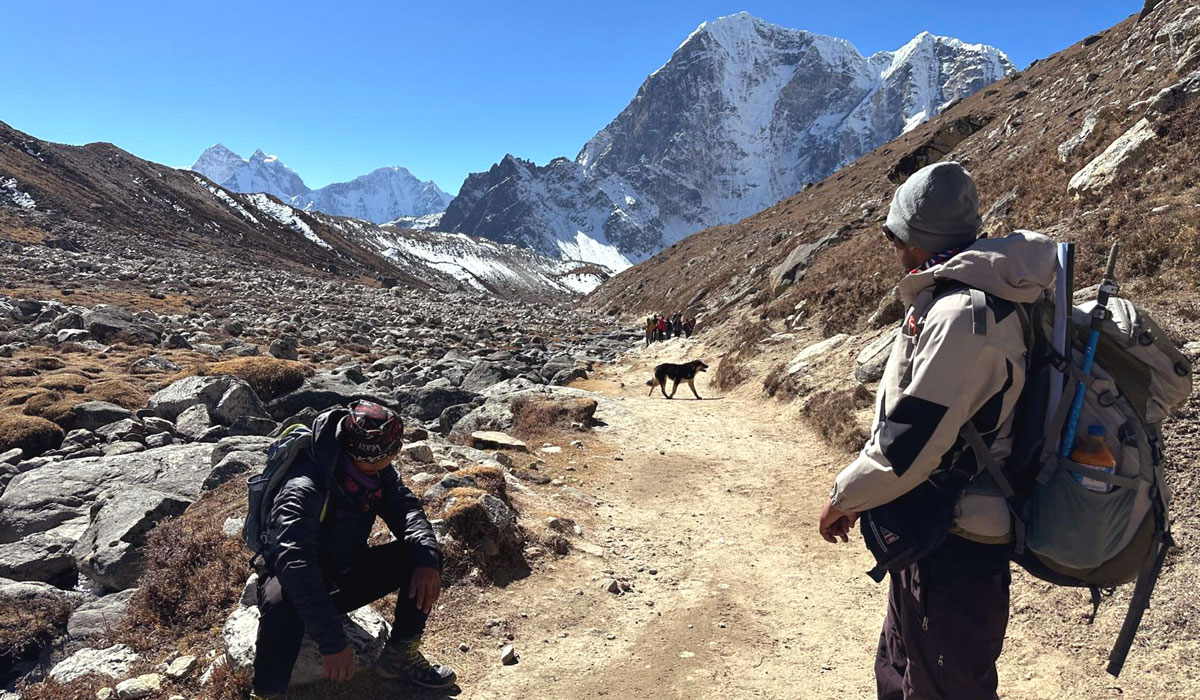
Who the Everest Base Camp Trek with Helicopter Return Is Best For?
The Everest Base Camp Trek with Helicopter Return is crafted for travelers who want the full trekking experience to Base Camp but prefer a more comfortable, time-efficient, and safer return. It suits a wide range of adventurers from first-time trekkers to experienced hikers looking for a smarter way to complete the journey.
This itinerary is ideal for travelers with limited time who still want to reach Everest Base Camp without rushing the ascent or compromising acclimatization. By flying back instead of descending for several days, you enjoy the complete experience in a shorter, more manageable schedule.
It is also an excellent choice for beginners and casual trekkers who want to enjoy the culture, scenery, and achievement of reaching Base Camp without the physical strain of long downhill trails. The helicopter return removes the most demanding part of the trek and keeps the adventure enjoyable and achievable for all fitness levels.
Trekkers who are concerned about knee or joint issues often prefer this version because descending rocky terrain can be harder on the body than the ascent. The fly-out option minimizes impact, reduces fatigue, and adds an extra level of comfort and safety.
The itinerary is popular among seniors, families, and mixed-ability groups, offering a balanced adventure that is challenging but not overwhelming. Parents traveling with teens, couples celebrating milestones, and older travelers seeking a once-in-a-lifetime Himalayan experience all find this route highly suitable.
Busy professionals and travelers who value premium, efficient experiences also choose this option. It blends adventure with comfort, allowing you to enjoy the emotional moments at Base Camp and Kala Patthar while returning quickly and effortlessly by helicopter.
For photographers and scenic experience seekers, the helicopter ride offers a rare opportunity to capture sweeping aerial views of Everest, the Khumbu Glacier, Ama Dablam, and the high Himalayan ridges. These visuals are impossible to experience from the trekking trail alone.
In short, this trek is perfect for anyone who wants the excitement and satisfaction of hiking to Everest Base Camp paired with the comfort, safety, and beauty of a scenic helicopter return. It’s the ideal choice for travelers who value achievement on the trail and elegance in the journey back.
EBC Trek with Helicopter Return Highlights
- Trek the legendary Everest Base Camp trail, walking through historic Sherpa villages, monasteries, yak pastures, and high-altitude valleys shaped by Himalayan culture and Buddhist traditions.
- Stand at Everest Base Camp, surrounded by the Khumbu Icefall, expedition tents, and the raw beauty of the world’s highest mountain region a moment that feels emotional and unforgettable.
- Witness the best viewpoint of Everest from Kala Patthar (5,545 m), where the sunrise paints the entire mountain range in shades of gold, offering one of the closest panoramic views of Everest’s summit.
- Skip the long, demanding descent and return to Kathmandu by scenic helicopter, saving 3-4 trekking days while enjoying a comfortable, safe, and spectacular aerial journey.
- Experience breathtaking helicopter views of Everest, Lhotse, Ama Dablam, Pumori, Nuptse, and countless glaciers and ridgelines a perspective few trekkers ever get to see.
- Ideal itinerary for travelers with limited time, combining proper acclimatization, cultural immersion, and a time-saving heli return to complete the EBC trek in a shorter, more efficient schedule.
- Stay in cozy Sherpa teahouses and experience warm Himalayan hospitality after each trekking day.
- Trek with experienced, licensed mountain guides who ensure your safety, comfort, and well-paced acclimatization throughout the route toward Base Camp.
- Perfect choice for beginners, seniors, photographers, and high-value travelers who want the full trekking experience with a comfortable flight back rather than days of downhill hiking.
- Finish your adventure in style with a helicopter flight that offers unmatched views and a memorable finale to the iconic Everest Base Camp journey.
Why Book the Everest Base Camp Trek with Helicopter Return With Dream Heaven Adventure?
Choosing the right trekking company is essential when planning a journey to Everest Base Camp, especially when your itinerary includes high-altitude trekking and a helicopter return. At Dream Heaven Adventure, we combine local expertise, reliable logistics, and genuine Himalayan hospitality to give you a safe, smooth, and meaningful experience from start to finish.
With more than a decade of experience in the Everest region, our team understands the trail, the altitude, the weather patterns, and the unique challenges of high-altitude trekking. Every group is guided by licensed, knowledgeable, and locally trained mountain guides who monitor your pacing, hydration, acclimatization, and wellbeing throughout the trek. Their experience ensures you’re always walking at a safe rhythm while enjoying the culture, scenery, and atmosphere of the Khumbu.
We coordinate your helicopter return with trusted aviation partners known for their safety records, experienced high-altitude pilots, and well-maintained aircraft. Your flight is scheduled based on real-time weather updates and aviation conditions, ensuring a reliable and comfortable journey back to Kathmandu.
Our itineraries are thoughtfully designed with proper acclimatization, comfortable overnight stops, and flexible walking days. We prioritize your safety above everything else no rushing, no unrealistic pacing, and no compromising on altitude guidelines. We also provide clear communication before and during the trek so you always know what to expect at each stage.
Dream Heaven Adventure is known for its warm service and ethical values. We treat our porters and staff with respect, fair wages, proper insurance, warm clothing, and safe working conditions. This responsible approach contributes to a positive environment for both travelers and our team.
From handling permits and domestic flights to arranging teahouse accommodations, meals, and daily logistics, we make the entire experience smooth and stress-free. Our Kathmandu support team remains available 24/7 throughout your trek, ensuring you have assistance whenever needed.
Travelers choose us because we care about your safety, your comfort, and your experience in the mountains. When you trek with Dream Heaven Adventure, you’re not just booking a package; you’re joining a team that genuinely wants you to enjoy every step, reach Base Camp confidently, and return home with extraordinary memories.
The Everest Base Camp Trek with Helicopter Return is a once-in-a-lifetime adventure, and we are here to make it unforgettable, safe, and beautifully organized from the moment you land in Nepal until the moment you fly back home.
